
The Untamed Beauty of Theodore Roosevelt National Park
Explore the rugged landscapes and rich history of Theodore Roosevelt National Park, where the spirit of the American frontier comes alive in North Dakota.
Theodore Roosevelt National Park, in the heart of North Dakota, offers a unique blend of rugged scenery, diverse wildlife, and rich history. Named after the 26th President of the United States, this park captures the essence of the American frontier that Theodore Roosevelt cherished and worked to preserve. The park is divided into three units: the North Unit, the South Unit, and the Elkhorn Ranch Unit, each offering its own distinct landscape and experiences. Visitors to the park can explore miles of hiking trails that wind through the stunning Badlands, where colorful rock formations and sweeping prairies provide breathtaking views. Wildlife enthusiasts can spot bison, wild horses, elk, and prairie dogs in their natural habitat. The Little Missouri River meanders through the park, offering opportunities for canoeing, kayaking, and fishing. In addition to its natural beauty, the park is steeped in history. The South Unit features the Maltese Cross Cabin, where Roosevelt lived and developed his conservation philosophy. The Elkhorn Ranch Unit, often referred to as the 'Cradle of Conservation,' was Roosevelt's beloved home and the place where he found solace and inspiration. Whether you're an outdoor adventurer, a history buff, or simply seeking tranquility, Theodore Roosevelt National Park promises an unforgettable experience.
Local tips in Theodore Roosevelt National Park
- Visit in late spring or early fall for the best weather and fewer crowds.
- Stop by the visitor centers for maps, exhibits, and ranger-led programs.
- Bring binoculars for wildlife viewing and a camera for capturing the stunning landscapes.
- Wear sturdy hiking boots and bring plenty of water and snacks for your hikes.
- Check for any trail closures or weather advisories before heading out.
The Untamed Beauty of Theodore Roosevelt National Park
Theodore Roosevelt National Park, in the heart of North Dakota, offers a unique blend of rugged scenery, diverse wildlife, and rich history. Named after the 26th President of the United States, this park captures the essence of the American frontier that Theodore Roosevelt cherished and worked to preserve. The park is divided into three units: the North Unit, the South Unit, and the Elkhorn Ranch Unit, each offering its own distinct landscape and experiences. Visitors to the park can explore miles of hiking trails that wind through the stunning Badlands, where colorful rock formations and sweeping prairies provide breathtaking views. Wildlife enthusiasts can spot bison, wild horses, elk, and prairie dogs in their natural habitat. The Little Missouri River meanders through the park, offering opportunities for canoeing, kayaking, and fishing. In addition to its natural beauty, the park is steeped in history. The South Unit features the Maltese Cross Cabin, where Roosevelt lived and developed his conservation philosophy. The Elkhorn Ranch Unit, often referred to as the 'Cradle of Conservation,' was Roosevelt's beloved home and the place where he found solace and inspiration. Whether you're an outdoor adventurer, a history buff, or simply seeking tranquility, Theodore Roosevelt National Park promises an unforgettable experience.
When is the best time to go to Theodore Roosevelt National Park?
Iconic landmarks you can’t miss
Painted Canyon Visitor Center
Experience the breathtaking beauty of Painted Canyon Visitor Center, your gateway to Theodore Roosevelt National Park's stunning landscapes and rich wildlife.

Roosevelt Park Zoo
Explore Roosevelt Park Zoo in Minot, ND – a family-friendly destination with diverse wildlife, interactive exhibits, and educational programs for all ages.

Fort Abraham Lincoln State Park
Explore Fort Abraham Lincoln State Park: A rich tapestry of history and stunning landscapes awaits you in North Dakota's natural gem.

Roosevelt Park
Experience the tranquility of Roosevelt Park, a beautiful green space in Minot, North Dakota, perfect for families and nature lovers.

Theodore Roosevelt National Park, South Unit.
Discover rugged landscapes and diverse wildlife at Theodore Roosevelt National Park, a true gem in North Dakota's natural heritage.

South Unit Visitor Center
Discover the essence of Theodore Roosevelt National Park at the South Unit Visitor Center, your gateway to nature's splendor and rich history.

Lewis and Clark Interpretive Center
Explore the legacy of Lewis and Clark at the Interpretive Center in Washburn, North Dakota, where history and nature intertwine beautifully.

North American Bison Discovery Center
Discover the rich history and ecological importance of bison at the North American Bison Discovery Center in Jamestown, ND – a must-see for wildlife enthusiasts.

Salem Sue
Discover Salem Sue, the giant Holstein cow statue in New Salem, ND, a unique landmark celebrating North Dakota's dairy farming heritage amidst stunning landscapes.

Fort Union Trading Post National Historic Site
Experience the vibrant history of the fur trade at Fort Union Trading Post National Historic Site, where culture and nature intertwine in North Dakota.
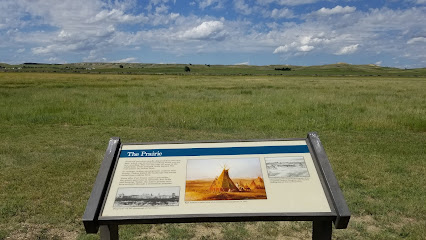
North Unit Visitor Center
Explore the North Unit Visitor Center for an enriching experience in Theodore Roosevelt National Park, where nature's beauty and history come alive.

White Horse Hill National Game Preserve
Explore the diverse ecosystems and breathtaking landscapes of White Horse Hill National Game Preserve, a haven for wildlife and nature lovers in North Dakota.

Icelandic State Park
Explore Icelandic State Park: A beautiful state park in North Dakota with scenic trails, historic pioneer buildings, and serene natural landscapes.

Fort Ransom State Park
Explore Fort Ransom State Park, a hidden gem in North Dakota with diverse trails, rich history, and stunning natural landscapes.
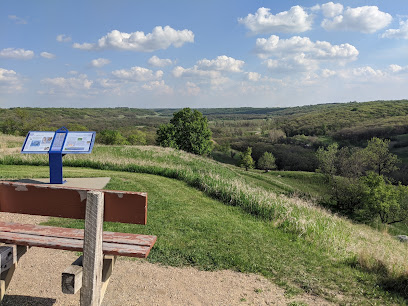
Knife River Indian Villages National Historic Site
Unearth the cultural legacy of the Northern Plains at Knife River Indian Villages National Historic Site, a blend of history and breathtaking nature.

Unmissable attractions to see
Roosevelt Park
Experience tranquility and recreation at Roosevelt Park, a beautiful urban oasis in Minot, ND, perfect for family outings and leisure activities.

North Unit Visitor Center
Explore the wonders of Theodore Roosevelt National Park at the North Unit Visitor Center, your gateway to North Dakota's stunning Badlands and rich wildlife.

Oxbow Overlook
Experience breathtaking views and diverse wildlife at Oxbow Overlook in Theodore Roosevelt National Park, a must-visit destination for nature lovers.

Chateau de Mores State Historic Site
Discover the rich history and stunning architecture of Chateau de Mores State Historic Site in Medora, North Dakota, a hidden gem for history enthusiasts.

Badlands Overlook
Discover the stunning landscapes and serene beauty of the Badlands Overlook in Medora, North Dakota, a must-see for nature lovers and photographers.

Cannonball Concretions Pullout
Discover the awe-inspiring Cannonball Concretions at this scenic pullout in Theodore Roosevelt National Park, where nature's artistry meets breathtaking landscapes.

Dakota Prairie Grasslands
Immerse yourself in the vast beauty of Dakota Prairie Grasslands, a stunning nature preserve in North Dakota, perfect for outdoor adventures and wildlife encounters.

Lake Metigoshe State Park Lodge
Experience the tranquil beauty of Lake Metigoshe State Park Lodge, where nature meets adventure in Bottineau, North Dakota.

Essential places to dine
Boots Bar & Grill
Experience delightful American cuisine at Boots Bar & Grill in Medora - perfect for adventurers and food lovers alike.

Little Missouri Saloon & Dining Room
Discover hearty American grill cuisine at Little Missouri Saloon & Dining Room in Medora, ND – your perfect dining stop near Theodore Roosevelt National Park.

Gramma Sharon's | Family Restaurant
Experience heartwarming comfort food at Gramma Sharon's in Williston - where family dining meets genuine hospitality.

Pitchfork Steak Fondue
Discover the unique taste of steak fondue amidst breathtaking views at Pitchfork Steak Fondue in Medora, ND.

Cowboy Cafe
Discover authentic Western cuisine at Cowboy Cafe in Medora - where hearty meals meet family-friendly charm amidst North Dakota's stunning landscapes.
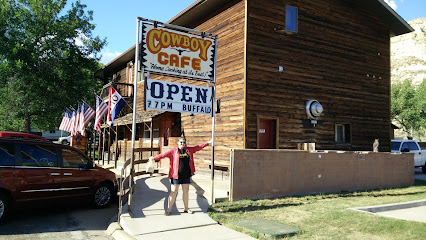
Theodore Roosevelt National Park, South Unit.
Discover Theodore Roosevelt National Park's stunning landscapes and rich wildlife in North Dakota's breathtaking national reserve.

Farmhouse Cafe
Experience delightful American comfort food at Farmhouse Cafe in Medora – your perfect dining stop after exploring North Dakota's natural beauty.

Badlands Pizza Parlor
Discover delicious pizza in Medora at Badlands Pizza Parlor – perfect after exploring Theodore Roosevelt National Park.

Rough Riders Hotel
Discover comfort and history at Rough Riders Hotel in Medora, ND—your gateway to Theodore Roosevelt National Park's breathtaking landscapes.

North Unit Visitor Center
Discover breathtaking landscapes and rich wildlife at North Unit Visitor Center in Theodore Roosevelt National Park - an essential stop for nature lovers.

Theodore's Dining Room
Savor exquisite American cuisine at Theodore's Dining Room in Medora—where local flavors meet fine dining elegance.
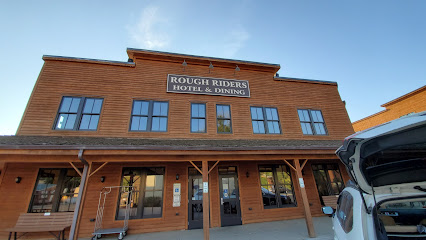
Wild Flour Cafe & Bakery
Experience the heartwarming flavors of American cuisine at Wild Flour Cafe & Bakery in Alexander, ND – your perfect stop for fresh coffee and homemade treats.

Medora Uncork'd
Discover exquisite dining and fine wines at Medora Uncork'd - where culinary excellence meets charming ambiance in Medora, ND.
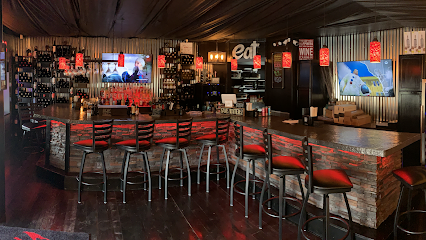
Bar X Ranch
Discover tranquility at Bar X Ranch - a premier campground in Medora, ND surrounded by nature's beauty and outdoor adventures.

Maltese Cross Cabin
Explore the Maltese Cross Cabin, where Theodore Roosevelt's legacy meets North Dakota's breathtaking Badlands.

Markets, malls and hidden boutiques
Theodore Roosevelt National Park, South Unit.
Discover the rugged beauty and rich history of Theodore Roosevelt National Park, a stunning national reserve in North Dakota's Badlands.

Fort Union Trading Post National Historic Site
Explore the rich history of the American fur trade at Fort Union Trading Post National Historic Site, where culture and nature meet.

North Unit Visitor Center
Discover the stunning landscapes and rich wildlife of Theodore Roosevelt National Park at the North Unit Visitor Center.

Hidden Springs Java
Discover the enchanting Hidden Springs Java, where exceptional coffee meets the charm of Medora, North Dakota, perfect for tourists and coffee aficionados alike.

Hatlee & Brae (Ice Cream, Coffee & Gifts)
Discover Hatlee & Brae in Medora, ND - the perfect spot for ice cream, coffee, and unique gifts for travelers and locals alike.

Painted Canyon Nature Trail
Explore the breathtaking Painted Canyon Nature Trail, a stunning hiking area in North Dakota with vibrant landscapes and rich wildlife.

Wind Canyon Trail
Experience the breathtaking beauty of Wind Canyon Trail in Theodore Roosevelt National Park, a must-visit hiking destination in Medora, North Dakota.

Petrified Forest Loop
Explore the Petrified Forest Loop in Medora, ND, where ancient trees and stunning landscapes create an unforgettable hiking adventure.

Prairie Fire Pottery
Explore Prairie Fire Pottery in Beach, ND: A haven for handcrafted ceramics and local artistry, offering unique pieces and creative workshops.

The Buffalo Gap Gift Shop
Discover unique gifts and local treasures at The Buffalo Gap Gift Shop in Medora, North Dakota, a charming destination for every traveler.

Dakota Cyclery
Discover Medora's cycling paradise at Dakota Cyclery, your gateway to breathtaking trails and top-notch bicycle rentals in North Dakota.

Medora Boot & Western Wear
Explore authentic cowboy boots and Western apparel at Medora Boot & Western Wear, a unique shopping experience in the heart of North Dakota.

Elkhorn Ranch
Discover the historic Elkhorn Ranch in Medora, North Dakota, where Theodore Roosevelt found inspiration amidst breathtaking Badlands landscapes.

Maltese Cross Cabin
Discover the Maltese Cross Cabin, the historic retreat of Theodore Roosevelt, nestled in the stunning landscapes of Medora, North Dakota.

Cowboy Lyle's Candy Barn
Discover a world of sweetness at Cowboy Lyle's Candy Barn in Medora, ND, with handmade treats that capture the essence of local flavors.

Essential bars & hidden hideouts
Theodore Roosevelt National Park
Discover Theodore Roosevelt National Park: a breathtaking national park in North Dakota, showcasing stunning badlands, diverse wildlife, and rich American history.

Boots Bar & Grill
Experience the charm of Medora at Boots Bar & Grill, where hearty American dishes and a vibrant bar await visitors in the heart of North Dakota's Badlands.

JL Beers
Discover the vibrant atmosphere of JL Beers in Grand Forks, where gourmet burgers and craft beers create an unforgettable dining experience.

Little Missouri Saloon & Dining Room
Experience the flavors of the Old West at Little Missouri Saloon & Dining Room, a charming grill in Medora, ND, offering local cuisine and a welcoming atmosphere.

Bar X Ranch
Experience the breathtaking beauty and outdoor adventures at Bar X Ranch, a premier campground in Medora, North Dakota, ideal for nature lovers.

Local Phrases about Theodore Roosevelt National Park
-
- HelloHowdy
[haw-dee] - GoodbyeSee ya later
[see ya lay-ter] - YesYah
[yah] - NoNah
[nah] - Please/You're welcomePlease and Thank ya
[pleez and thank yuh] - Thank youMuch obliged
[muhch uh-blahy-jd] - Excuse me/SorryPardon me
[pahr-dn me] - How are you?Howdy partner?
[haw-dee pahrt-nr] - Fine. And you?Just dandy. And you?
[juhst dan-dee. and yuh?] - Do you speak English?Y'all speak English?
[y'all speak ing-glish?] - I don't understandI'm plum confused
[I'm plum kuh n-fyoozd]
- HelloHowdy
-
- I'd like to see the menu, pleaseI reckon I'll take a gander at the menu, if you please
[I reckon I'll take uh gan-der at the menu, if yuh pleez] - I don't eat meatI'm a vegetarian
[I'm uh veh-juh-tear-ee-an] - Cheers!Bottoms up!
[Bot-uhmz up!] - I would like to pay, pleaseI reckon it's time to settle the bill, if you don't mind
[I reckon it's time to set-ul the bill, if yuh don't mind]
- I'd like to see the menu, pleaseI reckon I'll take a gander at the menu, if you please
-
- Help!SOS!
[SOS!] - Go away!Git!
[Git!] - Call the Police!Holler for the Sheriff!
[Holler for the Sheriff!] - Call a doctor!Ring up Doc!
[Ring up Doc!] - I'm lostI'm turned around
[I'm turned around] - I'm illI'm feelin' poorly
[I'm feelin' poor-ly]
- Help!SOS!
-
- I'd like to buy...I'm fixin' to purchase...
[I'm fixin' to pur-chus...] - I'm just lookingI'm just browsin'
[I'm just brow-zin'] - How much is it?What's the damage?
[What's the dam-age?] - That's too expensiveThat's a might pricey
[That's uh might prahy-see] - Can you lower the price?Can you do better on the price?
[Can you do bet-ter on the price?]
- I'd like to buy...I'm fixin' to purchase...
-
- What time is it?What's the hour?
[What's the hour?] - It's one o'clockIt's high noon
[It's high noon] - Half past (10)Ten-thirty
[Ten-thur-tee] - MorningMornin'
[Mornin'] - AfternoonAfternoon
[Afternoon] - EveningEvenin'
[Evenin'] - YesterdayYesteryear
[Yess-ter-year] - TodayToday
[Today] - TomorrowMorrow
[Morrow] - 1One
[One] - 2Two
[Two] - 3Three
[Three] - 4Four
[Four] - 5Five
[Five] - 6Six
[Six] - 7Seven
[Seven] - 8Eight
[Eight] - 9Nine
[Nine] - 10Ten
[Ten]
- What time is it?What's the hour?
-
- Where's a/the...?Where's the...?
[Where's the...?] - What's the address?Where's the place at?
[Where's the place at?] - Can you show me (on the map)?Can you point me in the right direction?
[Can you point me in the right direction?] - When's the next (bus)?When's the next stage?
[When's the next stage?] - A ticket (to ....)A pass (to ....)
[A pass (to ....)]
- Where's a/the...?Where's the...?
History of Theodore Roosevelt National Park
-
In September 1883, Theodore Roosevelt first arrived in the Badlands of North Dakota. Seeking solace after the death of his wife and mother on the same day, Roosevelt found the rugged landscape and the physical challenges of ranch life to be a perfect refuge. This experience profoundly influenced his conservation ethos and future policies as the 26th President of the United States.
-
Theodore Roosevelt established the Elkhorn Ranch along the Little Missouri River in 1884. This ranch became his primary residence in the Badlands and served as a place for contemplation and recovery. The site of the ranch is now preserved within the park, offering visitors a glimpse into Roosevelt's life and the inspiration he drew from this rugged environment.
-
Before establishing the Elkhorn Ranch, Roosevelt first stayed at the Maltese Cross Ranch, which he co-owned. The cabin from this ranch, where Roosevelt would often retreat to write and reflect, has been preserved and relocated to the South Unit Visitor Center of Theodore Roosevelt National Park. It stands as an important historical artifact, showcasing the early days of Roosevelt's ranching life.
-
Theodore Roosevelt National Park was established on November 10, 1978, by an act of Congress. The park was created to honor Theodore Roosevelt's contributions to conservation and to preserve the landscape that had such a profound impact on his life. It encompasses three separate units: the North Unit, South Unit, and the Elkhorn Ranch Unit, each offering unique geological and ecological features.
-
Roosevelt's time in the Badlands significantly shaped his conservation philosophy. As President, he established the United States Forest Service and signed into law the creation of five national parks, 18 national monuments, and 150 national forests. His efforts laid the groundwork for the modern conservation movement and are commemorated within the park that bears his name.
-
During the 1930s, the Civilian Conservation Corps (CCC) played a crucial role in developing the infrastructure of what would become Theodore Roosevelt National Park. The CCC built roads, trails, and buildings, many of which are still in use today. Their efforts not only provided employment during the Great Depression but also helped to preserve and enhance the natural beauty of the park.
-
The lands within Theodore Roosevelt National Park hold cultural and historical significance to several Native American tribes, including the Mandan, Hidatsa, and Arikara Nation. These tribes have lived in and traversed the Badlands for centuries, utilizing its resources and passing down stories and traditions that continue to be honored today. The park works to recognize and preserve this cultural heritage.
Theodore Roosevelt National Park Essentials
-
Theodore Roosevelt National Park is located in western North Dakota. The nearest major airports are Bismarck Municipal Airport (BIS) and Theodore Roosevelt Regional Airport (DIK) in Dickinson. Bismarck is approximately 130 miles from the park, while Dickinson is about 37 miles away. From these airports, you can rent a car to drive to the park. Alternatively, you can take a Greyhound bus to Dickinson and then rent a car or taxi to the park.
-
Once you arrive at Theodore Roosevelt National Park, the best way to get around is by car. The park has several scenic drives, including the South Unit's 36-mile Scenic Loop Drive and the North Unit's 14-mile Scenic Drive. There is no public transportation within the park, so having your own vehicle is essential. Biking and hiking are also popular ways to explore the park's trails.
-
The official currency is the United States Dollar (USD). Credit cards are widely accepted at hotels, restaurants, and shops in the nearby towns of Medora and Dickinson. ATMs are available in these towns, but it is advisable to carry some cash, especially when venturing into more remote areas of the park where card payments may not be accepted.
-
Theodore Roosevelt National Park is generally a safe destination for tourists. However, it is essential to take standard precautions. Stay on designated trails and be aware of wildlife, as bison and other animals can be dangerous if approached. There are no specific high-crime areas targeting tourists, but always lock your vehicle and keep valuables out of sight. Avoid hiking alone and inform someone of your plans before heading out.
-
In case of emergency, dial 911 for immediate assistance. The nearest medical facilities are in Dickinson, approximately 37 miles from the park. It is recommended to have travel insurance that covers medical emergencies. For minor health issues, carry a basic first-aid kit, and be aware of the location of the park's visitor centers, where rangers can provide assistance.
-
Fashion: Do wear comfortable and weather-appropriate clothing, including sturdy hiking boots. Don’t wear open-toed shoes on trails. Religion: Do respect the natural environment and other visitors. Public Transport: There is no public transport within the park, so plan accordingly. Greetings: Do greet fellow hikers and park staff with a friendly nod or wave. Eating & Drinking: Do bring plenty of water and snacks, as services within the park are limited. Don’t leave trash behind; always pack out what you pack in.
-
To experience Theodore Roosevelt National Park like a local, visit during the shoulder seasons of spring and fall when the weather is pleasant, and the crowds are thinner. Take time to explore lesser-known trails like the Petrified Forest Loop. Attend ranger-led programs to learn more about the park's history and wildlife. Don’t miss the Medora Musical, a popular summer event in the nearby town of Medora, which offers a taste of local culture and entertainment.
Trending Landmarks in Theodore Roosevelt National Park
-
Painted Canyon Visitor Center
-
Roosevelt Park Zoo
-
Fort Abraham Lincoln State Park
-
Roosevelt Park
-
Theodore Roosevelt National Park, South Unit.
-
South Unit Visitor Center
-
Lewis and Clark Interpretive Center
-
North American Bison Discovery Center
-
Salem Sue
-
Fort Union Trading Post National Historic Site
-
North Unit Visitor Center
-
White Horse Hill National Game Preserve
-
Icelandic State Park
-
Fort Ransom State Park
-
Knife River Indian Villages National Historic Site
Nearby Cities to Theodore Roosevelt National Park
-
Things To Do in Williston
-
Things To Do in Mandan
-
Things To Do in Bismarck
-
Things To Do in Minot
-
Things To Do in Deadwood
-
Things To Do in Rapid City
-
Things To Do in Gillette
-
Things To Do in Mount Rushmore
-
Things To Do in Custer
-
Things To Do in Sheridan
-
Things To Do in Jamestown
-
Things To Do in Devils Lake
-
Things To Do in Pierre
-
Things To Do in Regina
-
Things To Do in Billings











